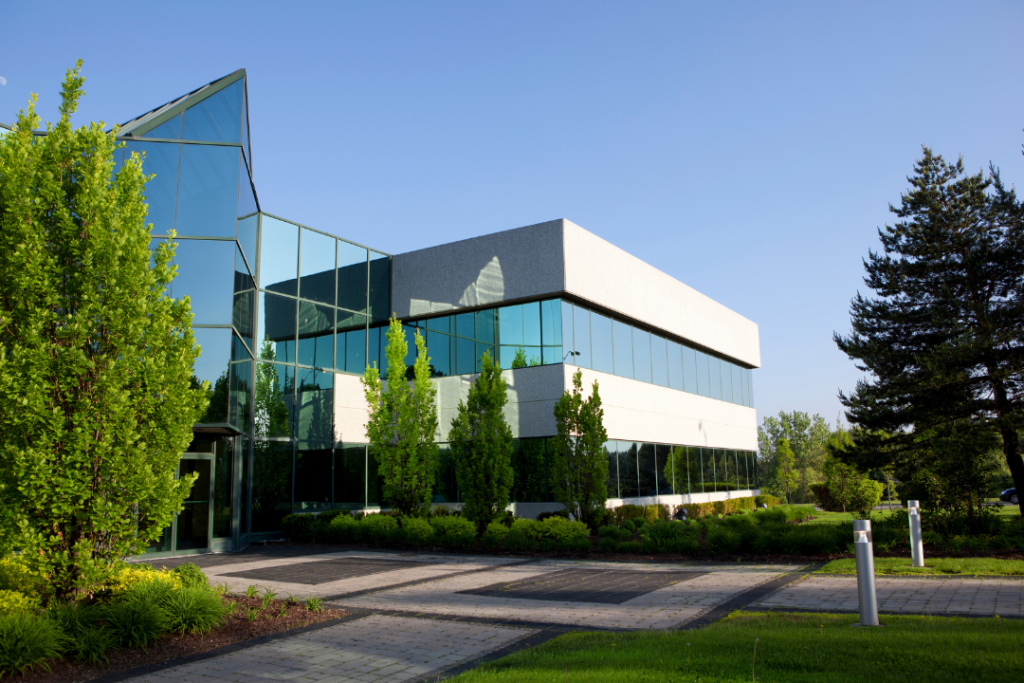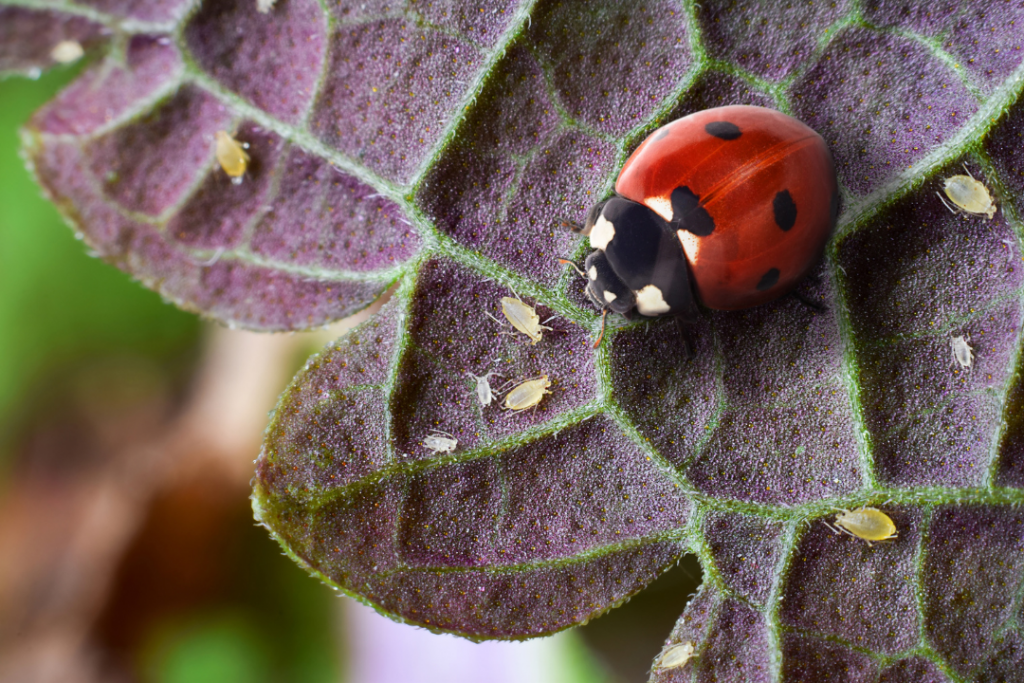Aphid Treatment 101: Simple Steps to Healthier Trees
Are you noticing sticky leaves, curling foliage, or black sooty mold on your trees? These could be signs of an aphid infestation. Fear not! In this blog post, we will delve into the world of aphids, understand their impact on trees, and explore simple steps you can take to ensure healthier trees through effective aphid treatment.
Understanding Aphids and Their Impact on Trees

Aphids, though small, can pose a large threat to the well-being of your trees. As they feast on the sap of plants, these tiny pests have the power to do more than just mar the appearance of your beloved trees with their presence as the real concern lies in their ability to weaken your trees significantly by siphoning off vital nutrients. This not only causes stress on the trees but can also stunt its growth, leading to a diminished vitality that is hard not to notice. Beyond the immediate physical damage, aphids serve as carriers for various diseases. When they move from one plant to another, they can spread viruses through your trees that can compromise the health of your trees. This dual threat of nutritional depletion and disease transmission underscores the importance of early detection and intervention. Spotting signs of aphids early can be the difference between a minor nuisance and a major problem for your trees. One of the most tell-tale signs of an aphid infestation is the presence of a sticky residue known as honeydew. This sugary secretion, left behind as aphids feed, can attract other unwanted guests, such as ants and sooty mold, compounding the issue and making the situation more visible and problematic. This cascading effect of complications is a clear indicator of how a seemingly small aphid problem can escalate, affecting not just the health but also the aesthetic appeal of your trees.
It’s also worth noting that the stress inflicted by aphids can leave trees more vulnerable to other pests and environmental stressors. A tree weakened by aphids may have a reduced ability to withstand harsh weather conditions, further emphasizing the need for proactive aphid treatment. Understanding the significant impact aphids can have on trees illuminates the importance of swift and effective treatments. Recognizing the early signs of infestation and understanding the potential consequences of inaction is the first step toward safeguarding the health and beauty of your trees. Engaging in knowledgeable and timely intervention can make all the difference in maintaining a vibrant and thriving garden landscape.
The Life Cycle of Aphids: Knowing Your Enemy
Understanding aphids helps when strategizing an effective solution to ridding your garden of these pests. Aphids are not your average pests; they possess a reproductive capacity that can seem almost impossible to fight off, which is exactly why knowing their lifecycle is key to keeping them in check.
Aphids engage in both sexual and asexual reproduction, which allows them to adapt and thrive in various environmental conditions. During the warmer months, female aphids can reproduce asexually, giving birth to live offspring without the need for mating. This means that a single aphid can quickly become the procreator of a vast army of sap-sucking pests, all eager to feast on your trees. What’s more, these offspring are often clones of the mother, creating a homogenous population that at times can resist generic pest control measures.
But aphids don’t stop there; they can also reproduce sexually, laying eggs that can survive the colder months. This dual strategy ensures that as soon as the weather becomes favorable, a new generation of aphids is ready to emerge and start the cycle anew.
However, armed with this knowledge, you can tailor your aphid treatment and prevention strategies more effectively. For instance, implementing control measures in early spring can target aphids before they have a chance to reproduce, potentially preventing an infestation before it begins. Similarly, understanding that aphids can lay dormant eggs that overwinter can encourage you to remain vigilant, even in colder months. By comprehending the unique reproductive capabilities of aphids, you’re better equipped to disrupt their lifecycle and protect your trees. This insight allows for more precise interventions, timed to prevent the exponential growth of aphid populations in your buildings, office spaces and gardens.. While the challenge may seem daunting, understanding your enemy is the first step in ensuring the health and vitality of your trees. With this knowledge, you’re one step closer to creating an environment where your trees can thrive.
Prevention is Key: Cultural Practices to Deter Aphids

Cultivating a garden that’s less appealing to aphids begins with prevention, a cornerstone principle that’s both effective and environmentally friendly. Embracing cultural practices that foster a robust ecosystem can significantly decrease the odds of an aphid invasion, safeguarding the health of your trees without resorting to harsh chemical interventions. Here’s how you can integrate these strategies into your gardening routine to keep those tiny pests at bay. Firstly, focusing on the diversity of your plant selection can vastly increase in aphid prevention. Including a variety of native plants in your garden not only adds beauty and resilience to your landscape but also supports a healthy balance of insects, including those that help your garden’s ecosystem in positive ways. By cultivating a mix of plant species, you encourage a more diverse insect population, which can naturally keep aphid numbers in check.
Maintaining the well-being of your garden is another crucial step in preventing aphid issues. Regularly inspecting your plants for early signs of stress or disease helps catch potential problems before they escalate. Healthy plants are less likely to attract aphids, therefore ensuring your trees and plants have the right nutrients, water, and sun exposure is fundamental. Pruning any damaged or diseased foliage promptly can also help prevent aphids from being drawn to weakened plants. Promoting beneficial insects is an often-overlooked aspect of cultural practices against aphids. Certain insects, like ladybugs, lacewings, and parasitic wasps, are natural predators of aphids. You can attract these helpful allies by planting flowers and herbs that provide them with nectar and pollen. Establishing such a welcoming environment for these beneficial insects can help control aphid populations naturally. By implementing these cultural practices, you’re not just deterring aphids; you’re contributing to the creation of a healthier, more resilient garden ecosystem. Embracing these preventive measures empowers you to protect your trees in a way that is harmonious with the environment, ensuring that your garden remains a thriving haven for both plants and beneficial insects alike.
Natural Aphid Treatment Options: Safe for Trees and Environment
Embracing natural solutions for aphid management not only demonstrates care for your trees but also reflects a commitment to preserving the well-being of our planet. Natural aphid treatments stand out as effective allies in our gardening practices, offering a gentle yet potent means to mitigate these pests. Let’s explore several environmentally friendly options that can make a significant difference in controlling aphid populations, safeguarding both your trees and the environment. Neem oil, extracted from the seeds of the neem tree, acts as a powerful organic pesticide. Its application disrupts the life cycle of aphids, deterring them from feeding, maturing, and reproducing. A regular spray regimen on affected areas can curb the growth of aphid populations, offering a safe environment for your trees.
Insecticidal soaps, another cornerstone of natural pest control, works by breaking down the protective outer layer of aphids, effectively dehydrating and thereby eliminating them. These soaps are made from naturally occurring plant oils and fatty acids, ensuring safety for your trees and their surrounding environment. When applied diligently to the infested parts of the plant, they can clear aphid colonies without leaving harmful residues. Employing these natural aphid treatment options aligns with a gardening philosophy that prioritizes harmony with nature. Each method offers a strategic approach to pest control, focusing on minimal environmental impact while providing your trees with the protection they need. As we integrate these practices into our gardening routines, we cultivate spaces that thrive in balance, demonstrating our respect and care for the natural world around us.
Chemical Treatments: When to Consider Them and How to Use Safely

While gardening often leans towards natural and environmentally friendly solutions, there are times when aphid infestations become so severe that chemical treatments emerge as a necessary course of action. Recognizing the moment to transition from natural remedies to chemical interventions is crucial, as is knowing how to apply these treatments in a manner that safeguards not only our beloved trees but our health and the environment as well.
Chemical pesticides should be considered a last resort, reserved for when an aphid population has surpassed a manageable threshold and is causing significant harm to your trees. Before you reach for that bottle, ensure you have tried various natural aphid treatments and cultural practices. If these efforts haven’t curbed the infestation, it may be time to explore chemical options. Safety is paramount when using chemical treatments. Start by selecting a pesticide specifically designed to target aphids, making sure it’s suitable for the type of trees you’re treating. It’s imperative to read the product label thoroughly, adhering to the recommended usage and dosage instructions. This step is not just about achieving effective results; it’s also about minimizing the potential impact on non-target insects, animals, and the broader ecosystem.
Equally important is wearing the appropriate protective gear, such as gloves, goggles, and masks, to prevent direct exposure to the chemicals. Apply treatments during calm weather conditions to avoid pesticide drift, and avoid spraying during peak pollinator activity hours to protect beneficial insects.
Application timing and methods are key factors in the efficacy of chemical treatments. Follow the guidelines for the best times to apply, ensuring the pesticide has the maximum impact on the aphid population while mitigating risks to the rest of your garden ecosystem. Remember, chemical treatments are not a stand-alone solution. They should be part of an integrated pest management strategy that includes monitoring for aphid activity, maintaining tree health, and employing preventive measures to reduce future outbreaks. By approaching aphid control with a thoughtful and informed strategy, we can manage these pests effectively while upholding our commitment to environmental stewardship.
Monitoring and Maintenance: Keeping Aphids at Bay Long-Term
Maintaining a vigilant eye on your trees after initial aphid treatment is essential for ensuring these pests don’t make a comeback. Regularly examining your trees for any tell-tale signs of aphid activity, such as the reappearance of sticky honeydew or the sight of the pests themselves, is crucial. Early detection allows for timely action, preventing minor issues from escalating into full-blown infestations. Creating a schedule for inspection can be incredibly useful for your continued aphid treatment. Designate a day each week to closely look over your trees, paying special attention to new growth and the undersides of leaves, where aphids love to congregate. If you spot aphids or the damage they cause, you’ll be able to respond quickly and efficiently with the appropriate treatment measures.
By incorporating these monitoring and maintenance practices into your regular gardening routine, you’re not just reacting to aphid problems—you’re actively preventing them. This proactive approach is key to enjoying a garden that remains vibrant and healthy, showcasing the beauty of your trees without the worry of aphid damage. Visit our website to learn more!